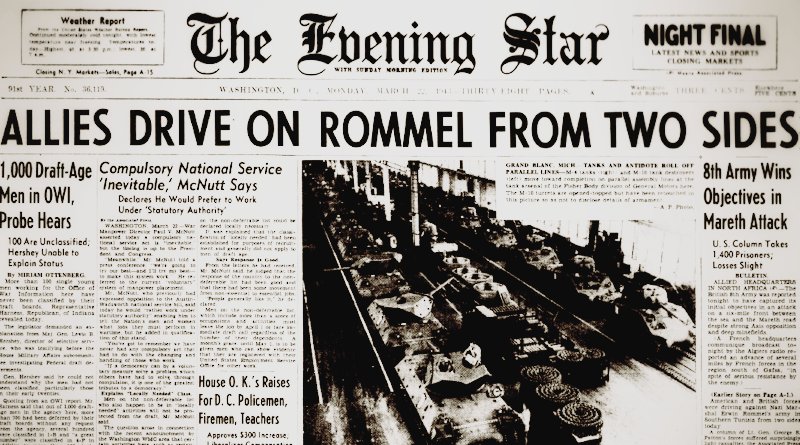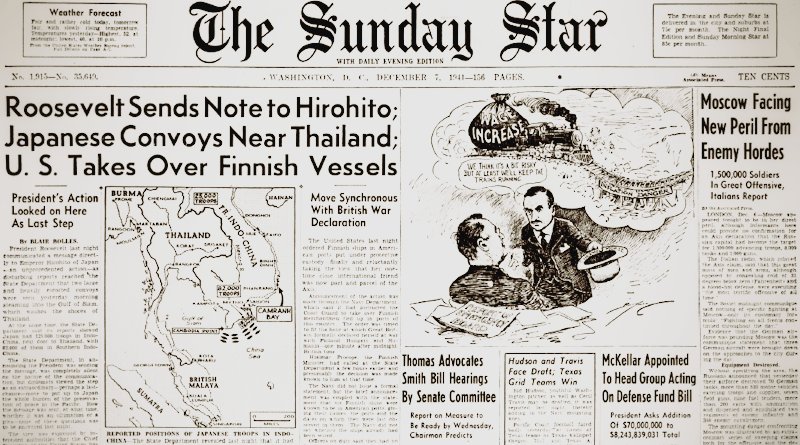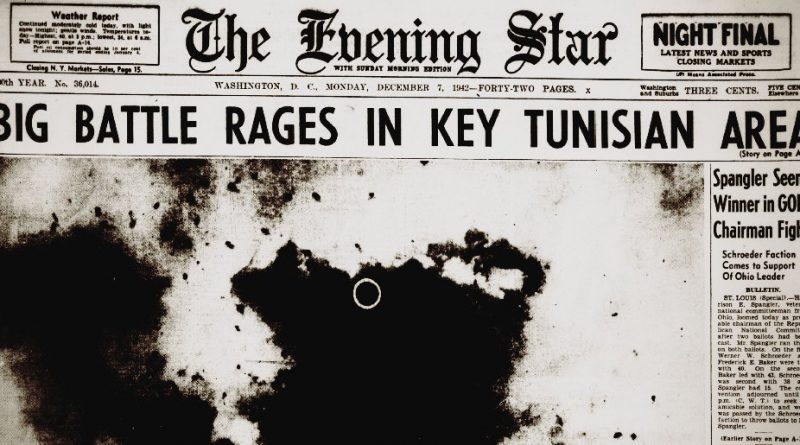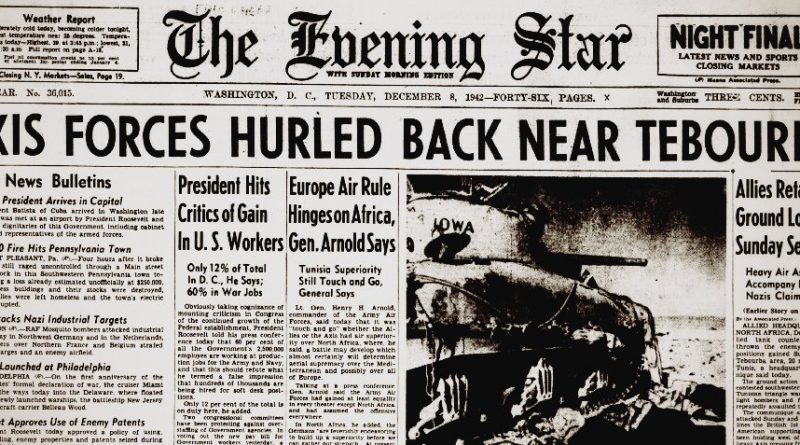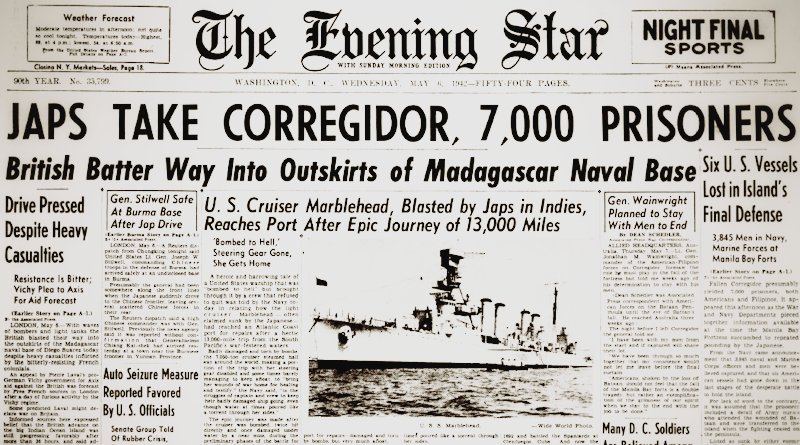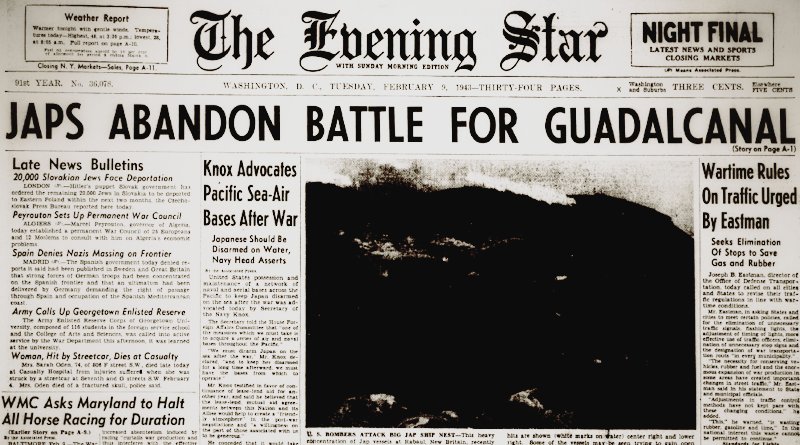World War II Chronicle: March 22, 1943
Click here for TODAY’S NEWSPAPER
The Army’s new 240-mm. M1 howitzer is pictured on page six. The “Black Dragon” takes about two hours to set up and requires separate vehicles to carry its barrel and carriage, plus a crane for assembly… George Fielding Eliot column on page 10… Sports begins on page 14, and reports that the Nationals have traded Bobby Estalella to the A’s for Bob Johnson. This is quite an upgrade for Washington considering Johnson has hit 100 RBI in seven of the last eight years and has hit 20 or more home runs in nine out of the last ten seasons. Johnson, five-time all-star, wanted to be traded since last year when he felt that Connie Mack cheated him out of a bonus. Clark Griffith also sent second baseman Jimmy Pofahl and $6,250 in cash. Pofahl’s puts in a season with the Double-A Minneapolis Millers, but goes to work in defense…
Lt. Jack Mathis of San Angelo, Texas is pictured on page 28. The B-17 bombardier was severely wounded by flak, but crawled back to his seat and released the Fort’s ordnance over the target before perishing. He will be posthumously awarded the Medal of Honor. His brother is in the same squadron, so stay tuned for more…
Roving Reporter by Ernie Pyle
ON THE NORTH AFRICAN DESERT — Most of the American fighting so far in North Africa has been in the mountains, and Americans have seen little of the real desert. But they will sooner or later, so I jumped at the chance to go along on a sortie far into the Sahara, just to see what it would be like.
There were 15 of us in two big 10-wheeled trucks. We took our bedding rolls and enough rations for five days. The purpose of the trip was to salvage the parts from some airplanes that had made crash landings in the desert.
Our trip was to take us within 20 miles of German outposts. We weren’t much afraid of being captured, but we were afraid of being strafed by German planes.
We started one morning, and made a French desert garrison at lunchtime. We got out tins of corned beef, sweet potatoes, peas, orange marmalade and hard tack. The French soldiers built a fire out of twigs between two rocks for us to heat water for tea. They cleared off a table in one of their barracks-rooms for us to eat on, and did every little thing for us they could.
For months I’ve been carrying around some cigars I got on the boat coming from England, waiting for a propitious moment to give them away. So when we left I gave some to the French soldiers, and you could see the delight on their faces. They lit up right away, and puffed and held the cigars off and looked at them approvingly, as though they were diamonds.
After we left, our soldiers kept talking about how nice the French were to us, and how they didn’t have much but whatever they had they’d give the best to us. The Americans like the French, and everywhere you go on the desert the French are grand to Americans.
This French garrison gave us one of its Arab enlisted men as a guide. He was a picturesque figure, rather handsome in his white turban, blue sash and khaki smock. He carried a long knife and a long-barreled rifle. He spoke no English whatsoever, and no French that we could understand. He said “wah” to everything we asked him.
He knew the way all right, but the communication system between him and us needed some improvement. All we ever got out of him was “wah.” We finally nicknamed him “Wah,” and before the trip was over we were all saying “wah” when we meant “yes.”
What we saw of the Sahara wasn’t exactly like what we see in the movies, but that’s maybe because we didn’t go far enough into it. The Sahara, you know, is more than 1,000 miles wide, and we were into it no more than 200 miles.
We saw nothing more drastic than what you’ll find in the more remote parts of our own Southwest. Certainly it was beautiful. At one point it was so utterly flat and bare that you could have landed anywhere and said, “This is an airport.”
At other places it had dry river beds, very wide, their bottoms strewn with rocks. This surprised us, for what is a river doing on a desert? Again the country would be rolling, and covered with a scrublike vegetation.
Parts of it were so exactly like the valley around Palm Springs that it made you homesick. Even down to the delicate smoke-tree bush. And one bare, tortured mountain could have been the one behind El Paso. Only once did we see a place with no vegetation at all, where the yellow sand was drifted movielike in great rippled dunes.
At long intervals we would come to what is known locally as an oasis. I used to think an oasis was three palm trees with a ragged guy crawling toward them, his parched tongue hanging out. But in this part of the desert an oasis is a village or a city. It doesn’t have three palm trees; it has tens of thousands of them, which make their owners rich from the bounteous crop of dates.
It has big adobe buildings like the Indian pueblos, and narrow streets and irrigation ditches, and hundreds of children running around. It is a big community, and getting to an oasis is like getting to Reno after Death Valley.
Evening star. (Washington, D.C.), 22 March 1943. Chronicling America: Historic American Newspapers. Lib. of Congress.
https://chroniclingamerica.loc.gov/lccn/sn83045462/1943-03-22/ed-1/
